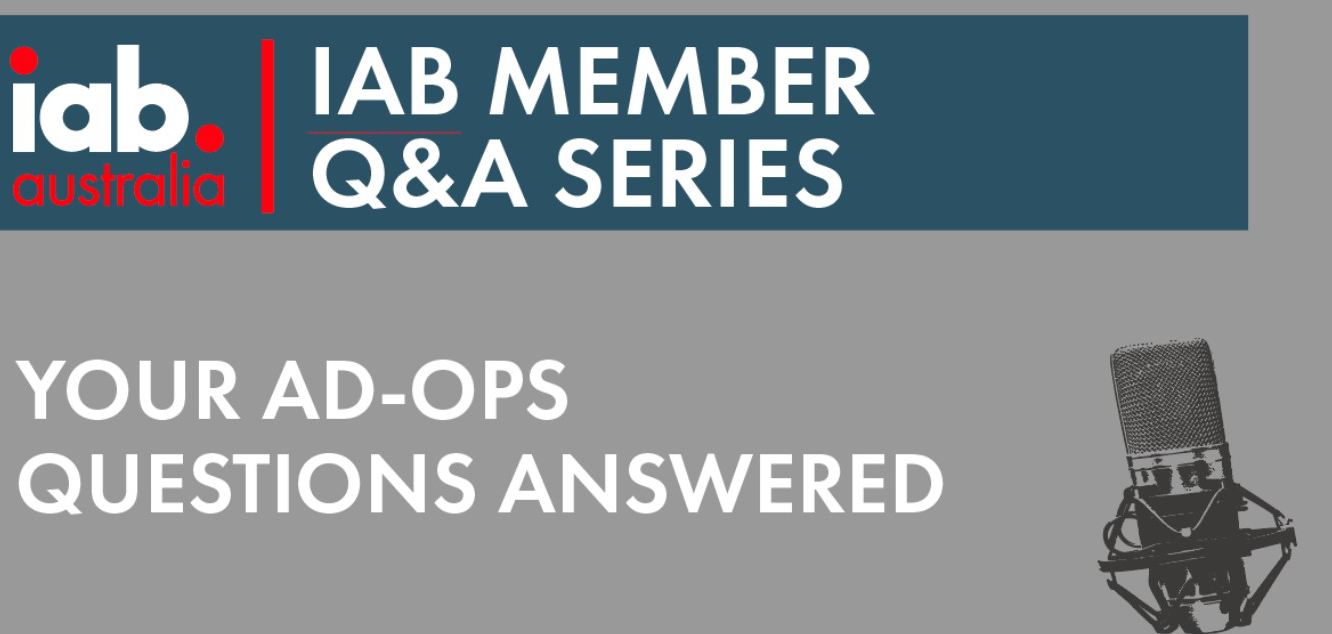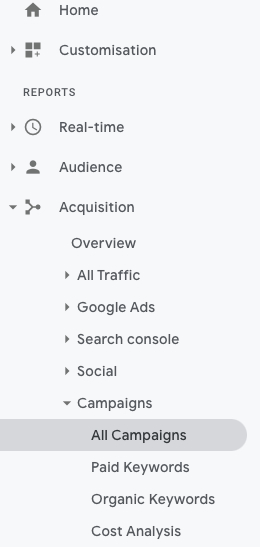
Our Standards and Guidelines council invited questions from our members for this Q&A article on a range of Operational and Technology related questions.
As technology has evolved companies have purchased multiple solutions to undertake specific functions. Is this ideal?
Paul Luckett, Head of Commercial AdTech, News Corp
No, while it’s understandable that in 2020 some companies may find themselves with a bloated or overly complex tech stack, it’s definitely not ideal. Great commercial strategies are built on strong foundations, and those foundations are strengthened by simplified/optimised tech stacks. In the past 10 years, the industry and technology as a whole, have gone through change at a breakneck pace, and countless businesses and solutions have popped up along the way to solve almost any issue a company can have.
It’s important to look at the solutions you have in place, and conduct a thorough review to ensure that the vendors you work with and the technology you use, are actually adding value to your business and it’s operations. It is easy to get caught up in the many acronyms used to measure value, eCPM, RPM, ROI, ROMI, ROAS, are all great for their specific purpose, but you really need to be asking questions such as: what is the actual value this solution brings to my business? Can it be improved upon? Can it be optimised or streamlined to reduce cost and improve margins? Insights-based platforms are a great example, there are so many platforms out there that provide analytics of absolutely anything, but how much of those insights are actionable? Is it a nice to know, or a must-have?
While working with vendors who promise us great outcomes is always an attractive option, we should never completely dismiss the potential for in-housing your technology solutions. Sometimes the next big thing for your company is already sitting in the mind of an employee somewhere but just hasn’t been given the chance to see the light of day. Initiatives such as accelerator programs or hackathons are great examples of how you can do some intellectual prospecting within your own business. They are also great methods for you to invest in your people and grow your own talent. You’d be surprised the amount of ‘cool stuff’ you can build with the knowledge and experience you have within your business right now, for example, NewsConnect has become an industry-leading platform, and was once just an idea that started with a small handful of News Corp employees.
The changes in data solutions and identity also present the perfect opportunity to simplify, with technology changes forcing the industry to innovate and clean out the cookie jar.
The good news is that now is a great time to take a step back and turn that spaghetti monster of a tech stack you’re using into something more akin to a modern technology-based business. If simplification or optimisation of your technology wasn’t on your roadmap for 2021, it’s time to put it on there.
How can we stop the divide between Sales and Ops?
Justin Orchard, Directer Ops & Tech, Verizon Media
The ops and sales divide has been a long standing topic that many of us have had to deal with over our careers. From experiencing the long and continuing evolution of the industry, products, platforms, buying methods and relationships, I think there has been a shift in how sales and ops work together. This shift has necessitated a purposeful removal of the divide to somewhat of a partnership. Businesses that have or are moving in this direction of partnership across their commercial teams will ultimately be more successful as all people work as one to deliver on the business goals.
There is an element of historic legacy in this topic as ad ops have traditionally been the gatekeepers to the delivery and performance of campaigns and making sure things work by the book.
What I think many businesses and the industry at large has seen over the past few years especially is an evolution of the way in which digital media is purchased and delivered and the work that is required to be done by both sales and ops teams to ensure success for a business.
This evolution has naturally led to a change of the roles both sales and ops play in a business and made the requirements for partnering together more important than ever. No longer are ad ops just there to traffic, run reports, update on delivery etc. There are unique specialisms that operations people hold and teams deliver for a commercial business, just as sales people and teams have unique specialisms that are essential.
Identifying these specialisms and ensuring that each team is allowed to deliver on these as much as possible is important for any business.
Commercial leaders should collaborate with their teams to ensure the identification and communication of the unique specialist skills sets that each of the teams in their organisation hold. Delivering clarity for all individuals on the roles each team plays is critical for a well performing organisation. Building partnership through cultural norms and values of the business while encouraging all people and teams to work together on the best outcomes for clients is an important role for a leader in this space.
For individuals in operations, taking the initiative to identify where your unique skills set, way of thinking and knowledge can add value within your business and being proactive with partnering with other teams is advice that can benefit you, your business, your brand and ultimately your career.
Ben Murray, Director Products & Technology, Interplay Media
I would look to businesses that have effectively cut-across that divide successfully in media. Some smaller businesses, lean start-ups and SSPs have all managed this successfully.
Why? Because they have had no choice but to understand the complexities of one another’s roles, so why should larger organisations be so different?
Essentially we (as a small business operator) encourage this holistic approach. It’s good to understand the complexities and demands put upon each other. For one, it makes your team more appreciative of the issues they each face, which in-turn helps creates better team harmony and relationships.
I would also encourage you to take AdOps and TechOps teams to sales meetings. They have a better understanding of the technical requirements that are needed in today’s ecosystem than sales ever will. Additionally, this helps those working in Ops to better understand the sales process and the relentless turnaround requirements put upon sales.
Also, ensure your ops and sales teams are SEATED TOGETHER. This should be an absolute requirement for a digital team. I remain baffled as to why in an era of transparency we continue to operate and manages our digital teams in separate divisions. You will not solve each others problems overnight, but, with time, you will help find collaborative solutions for these problems if you bring them to the table together.
Paul Luckett, Head of Commercial AdTech, News Corp
I think it’s important that Sales and AdOps are working towards a common goal, this may seem like an obvious thing at first, but when you consider that most Sales teams are KPI’d on revenue booked while Ad Ops will be KPI’d on campaign delivery, these aren’t always the same thing. If they aren’t aligned on delivering client outcomes then it will lead to things like overbooked or underdelivering campaigns and an understandably perturbed Ad Ops team, which only serves to expand that divide.
How to manage effectively discrepancies between Google Analytics and Adservers?
Nathan Farrugia, Technical Operations Specialist, REA Group
It is very common and normal to have data discrepancies between Adservers and Google Analytics.
It is recommended that you don’t compare Google Analytics and Adserver numbers due to possible discrepancies. The important thing here is to ensure that your Account Managers and clients understand the difference between the counting life-cycle of the two systems.
Metrics are counted at different points in the click-referral cycle. Ad servers count ad clicks at the source while GA counts page views/sessions when a user hits the site.
Several technical factors can cause these discrepancies. I won’t go into all the reasons here as there are already plenty of great resources on the web, but here are a few key points:
– Server Latency – A user clicks off before the GA tracking codes are executed.
– If iFrames reside on different domains, the referral information is likely to be inaccurate.
– Browser Preferences / Blockers– a user could have their browser preferences set up in a way that prevents the ad server or GA from collecting data.
Some tips to help bridge the gaps:
– Question exactly what numbers and where in GA the client is referring too.
– Compare the numbers and find out the percentage difference. You want to average between 10-15%
– Ensure the client is referring to page views and not sessions as sessions will be counting unique users only.
– Ensure dates and time zones are the same.
– Create custom URLs using the dedicated Campaign URL builder
– Be helpful to the client and provide clear instructions and screen shots on how to report on the numbers since using URL builder.
– Reports column on the left -> Acquisition -> Campaigns – All Campaigns. Always ensure that they refer to Pages/Sessions, not users or sessions.
